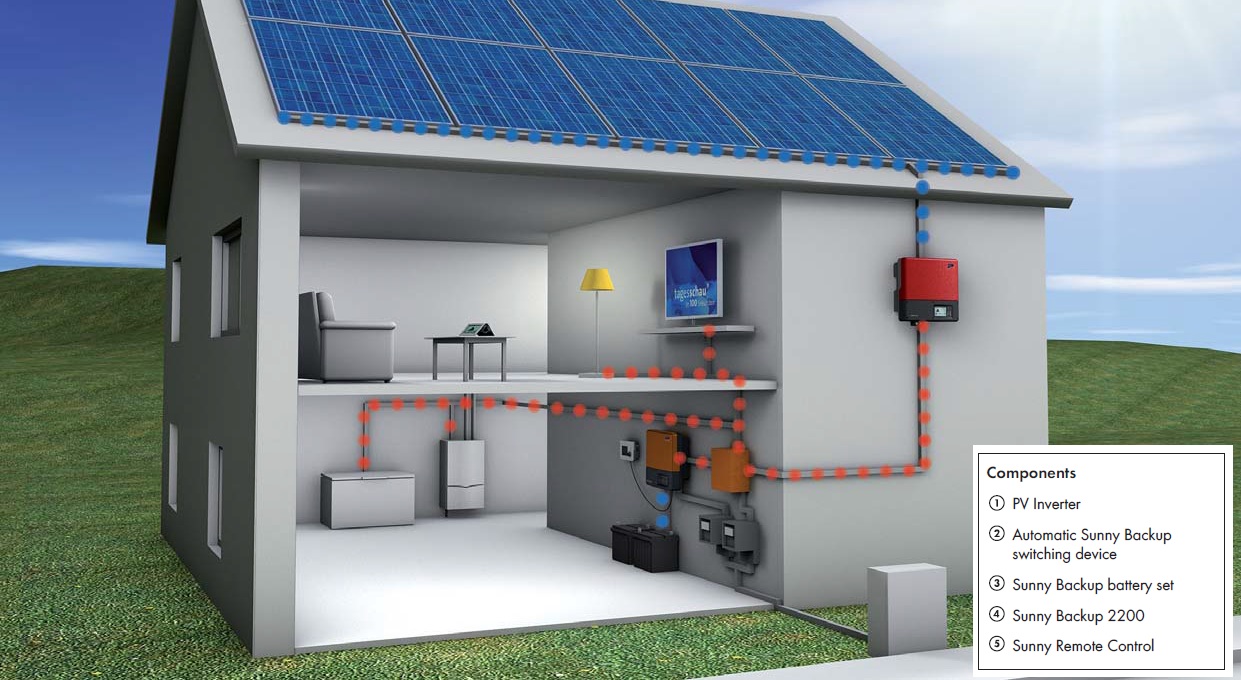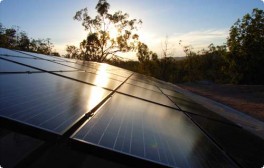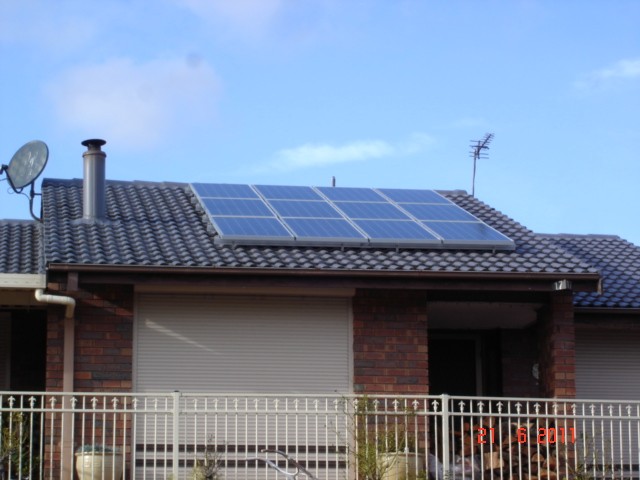PV Solar Systems
What kind of solar system do you need?
1) What configuration of solar system do you need?
There are 3 types solar systems that can be installed at your place.
a) Grid Connect Solar Systems

The majority of solar systems sold in Australia are connected to the grid. The main reason being that they are the most reliable and cheapest way to solar power your home. Why? Because the grid acts like a giant battery with an almost infinite capacity to both provide power when you need it and to absorb excess power when your panels are producing more than your home can take. This means you don’t have to buy expensive racks of batteries or any fancy controllers to charge and discharge them. Most of the info on this site is related to grid connect solar power systems. Read more …
b) Off Grid Solar Systems

These are relatively expensive. You generally only go for off grid solar if you are in one of 2 situations:
i) You live in a location were you have no local grid connection.
ii) You have access to the grid, but you hate the thought of depending on it so much that you are happy to spend tens of thousands of dollars extra for an off grid system.
If you suspect that off grid solar is what you need then you may enjoy my guide to Off Grid Solar Systems. Read more …
c) Backup

The “third way” which is mixture of on-grid and off-grid technologies. The Backup Solar System. It is essentially a grid-connected solar system with batteries. It is a lot more flexible than a grid connect system, but cheaper than an off grid system.
A Backup solar system can be an good way to low feed in tariffs now operating in most Australian states where you get 8c for power exported, and have to pay over 30c to buy it back later. Read more …
2) What size of solar system do you need?
Once you’ve decided on the configuration, the next most important consideration is what size of solar system do you need?
Here are the most popular system sizes on the market. The following solar system sizes probably account for at least 90% of systems sold in Australia:
Most popular: The 1.5kW Solar System (6 x 250W panels)
This size makes up about 50% of all systems currently sold. Why? Because the pre 2013 solar rebate maxed out at 1.5kW. This means that for the previous 4 years a 1.5kW system gave you the most kW per dollar spent. Since the solar rebate changed on Jan 1 2013, the rebate does not favour 1.5kW systems anymore. You get the same rebate for every kW bought. And that’s a good thing. Because, unless you have a super efficient home, a 1.5kW isn’t going to make much of a dent in your electricity bill. Current pricing for a good 1.5kW system is about $2800 after rebates.
Interestingly some Aussies who want to go larger than 1.5kW, usually skip the 2kW Solar System option and instead go for a 3kW solar system (12x250W panels). This will usually offset three quarters of an average Aussie homes’ electricity usage and cost about $6000.
If wiping out your electricity bill is important to you then a 5kW solar system, will usually do the trick for an average Aussie home. But having said that, it does depend on how much electricity you use and what times of the day you use it, so make sure any installer that gives you a quote does a proper energy analysis if you want to be confident of a $0 bill! Current pricing for 5kW starts at about $11,000.
Much bigger than 5kW and you are going to need a very big roof!
About the biggest system that gets sold into the residential market would be a 10kW solar system which has a whopping 40 solar panels (at 250W each). This size tends to be popular with Bowling clubs and Churches that really want to crank out the green energy!
So that’s a very quick guide to the two main choices you have to make when buying a solar system:
- What type? On Grid / Off Grid / Backup
- What Size?
Ninety percent of you will suit a grid connect system between 1.5 and 5kW. Deciding that you need grid connect is the easy bit. Choosing the correct size between 1.5 and 5kW is where it can get tricky. Get it right and you have a great investment and almost no bills. I get emails from people every day that have got the right advice and are ecstatic at not having bills anymore.
Get the size wrong and you suffer one of two ways. You either have a system that makes almost no dent in your power bills, or you pay way too much for too big a system that will take forever to pay for itself.
A good solar salesperson will only deal in solar system facts and will want to sell you the system size that makes sense for you. A bad one will simply pluck numbers out of the air and try to get you to go as big as possible to fatten his commission.
A good solar system sales person will not recommend a system size until he has established both how much electricity you use every day and just as critically what times of day you use the electricity. Once he has that information he should be able give you an accurate estimate of your bill reduction and your payback period. And he should be prepared to guarantee it in writing!







